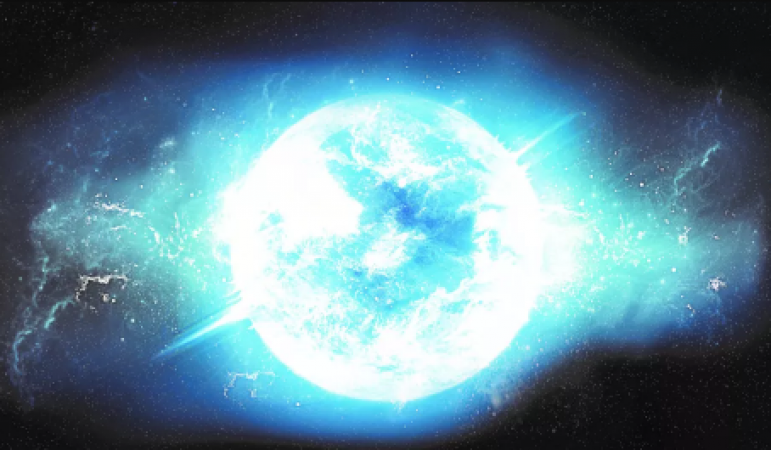
USA: Astronomers have now accurately determined the mass of a single, isolated white dwarf, also known as the "surviving core of a burned-out, Sun-like star", with the help of NASA's Hubble Space Telescope. goes. It turned out that the mass of the white dwarf is 56 percent of the mass of the Sun. This result is consistent with theoretical predictions and existing theories.
Once a star's nuclear fuel is exhausted, it becomes a white dwarf. After expelling most of its outer material, only the hot core of the star is left. A typical white dwarf is about the size of Earth and has half the mass of the Sun. Hubble's singular observation provides new information on the composition and structure of white dwarfs.
Isolated white dwarfs observed using gravitational microlensing, a natural phenomenon. According to NASA, the space gravity of the foreground dwarf star caused the light of a background star to be deflected slightly. Microlensing caused the background star to appear briefly offset from its true position in the sky as the white dwarf passed in front of it.
Also Read: WhatsApp is developing a call shortcut feature
LAWD 37, the white dwarf in question, is thought to be the last remnant of a star that exploded a billion years ago. It is located only 15 light-years away in the constellation Muska. The researchers used Hubble to measure the light coming from a distant star around LAWD 37, temporarily shifting the background star's apparent position in the sky.
White dwarfs in binary star systems first have their masses determined by tracking the motions of two co-orbiting stars. The white dwarf's companion star, however, may be in an orbit with a long period of hundreds or even thousands of years, making these measurements uncertain.
Additionally, only a small fraction of the dwarf's orbital motion can be observed through telescopes.
In 2017, Kailash Sahu of the Space Telescope Science Institute in Maryland used microlensing for the first time. They did this to determine the mass of Stein 2051 b, another white dwarf. Because LAWD 37 is in its own right, "our most recent observation provides a new benchmark," according to Sahoo, who is also the principal Hubble investigator on this most recent observation.
Also Read: SLS rocket from NASA appears prepared for the crewed Artemis 2 mission
Based on observations made by the Gaia space observatory, which surveys approximately two billion star positions, LAWD 37 was chosen. Then, astronomers were able to predict that in November 2019, LAWD 37 would pass in front of a background star.
Hubble then observed for several years how LAWD 37's passage temporarily changed the background star's apparent position in the sky.
According to Peter McGill, lead author of the study, "These events are uncommon, and the effects are minimal." "For example, measuring the length of a car on the Moon as seen from Earth is like measuring the size of our measured offset."
But not everything went perfectly. The light of the background star was barely visible. Getting an image away from the glare of the white dwarf, which is 400 times brighter than the background star, was the main challenge for astronomers. But Hubble, the only telescope capable of making such high-contrast observations in visible light, enabled them to do so.
Also Read: Astronauts finish the work necessary to upgrade the ISS's power system
With the help of the Gaia data, researchers hope to predict such future events. According to McGill, it's exciting to be able to use Gaia data to predict when events will happen and then watch them actually happen. "Gaia has really changed the game," he said. We want to continue monitoring the gravitational microlensing effect and measure the masses of many additional star types.